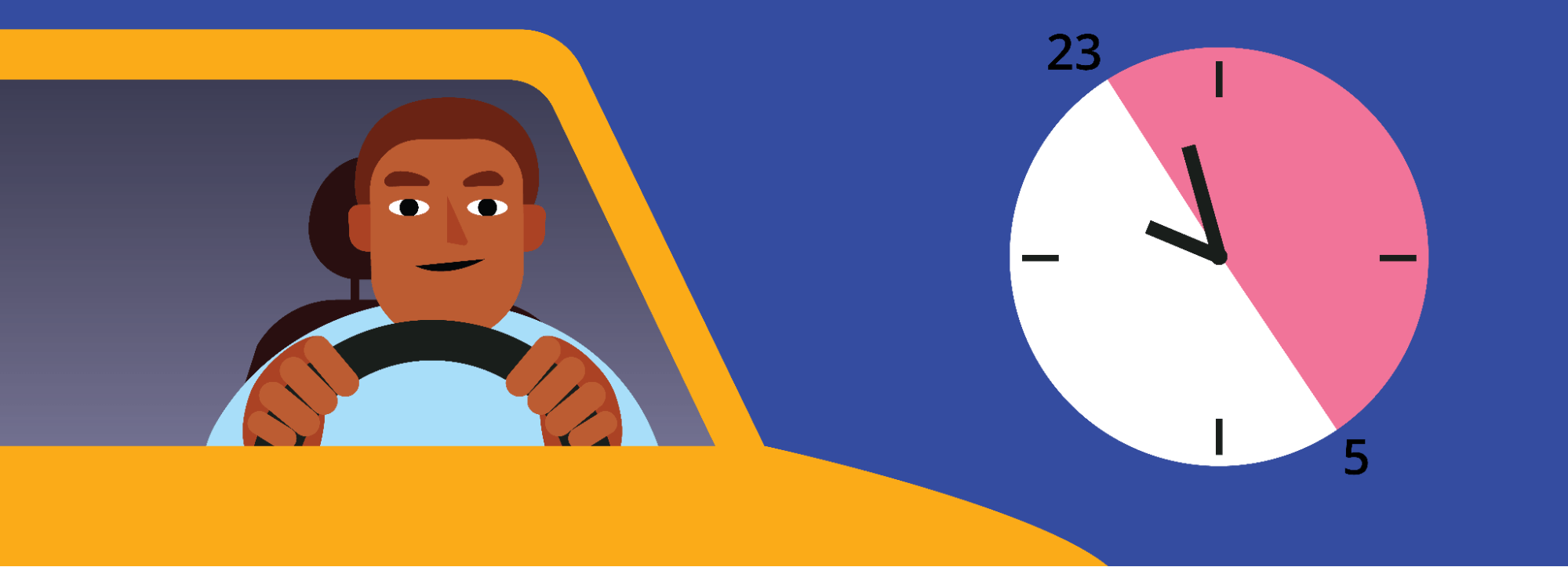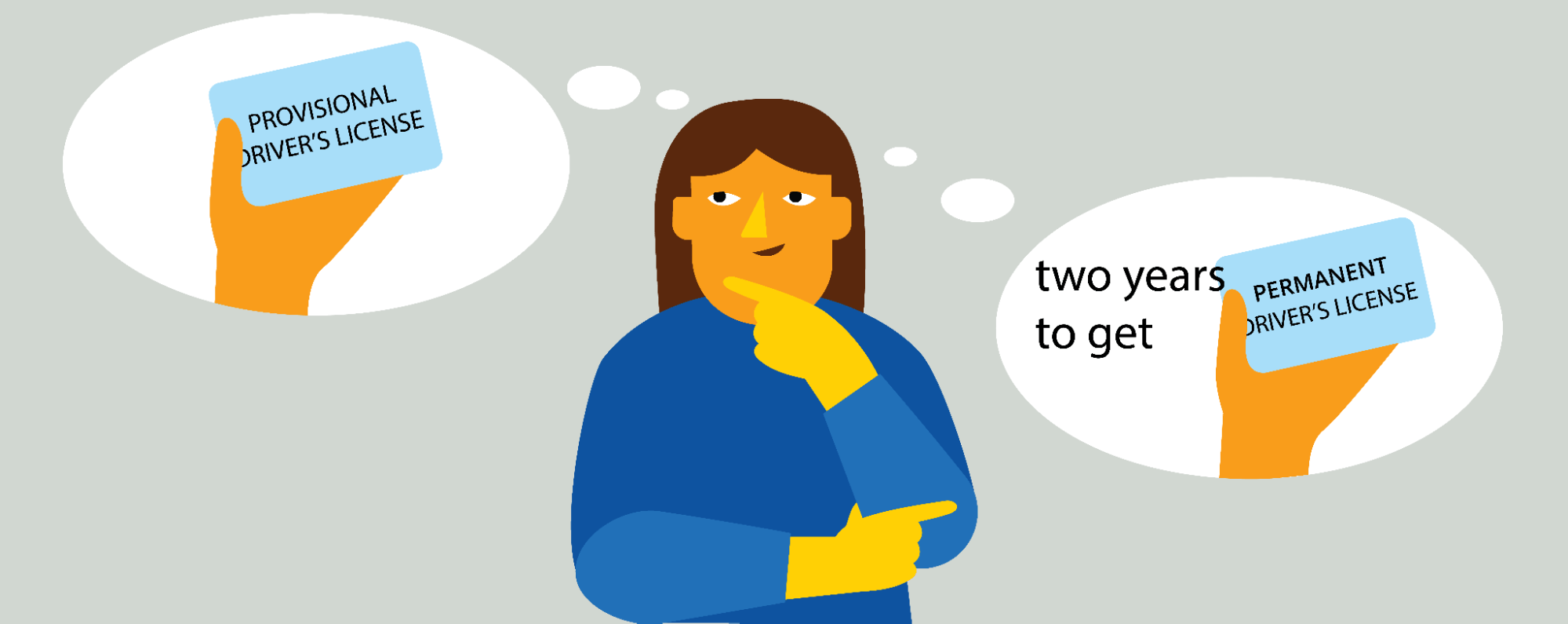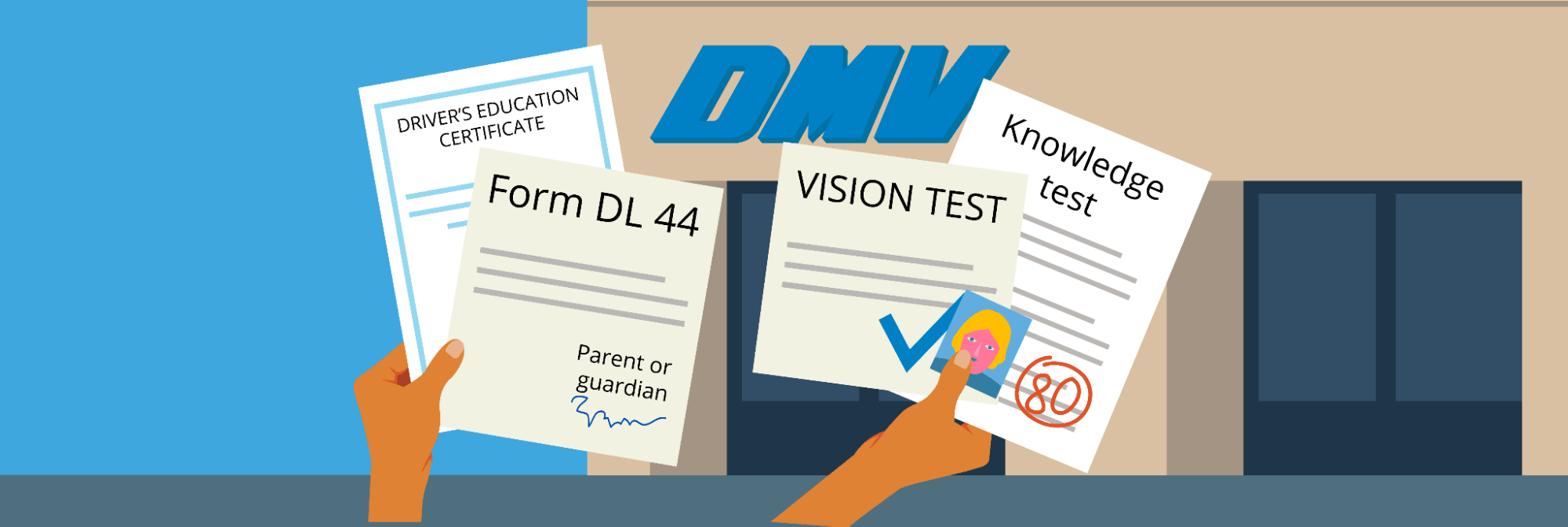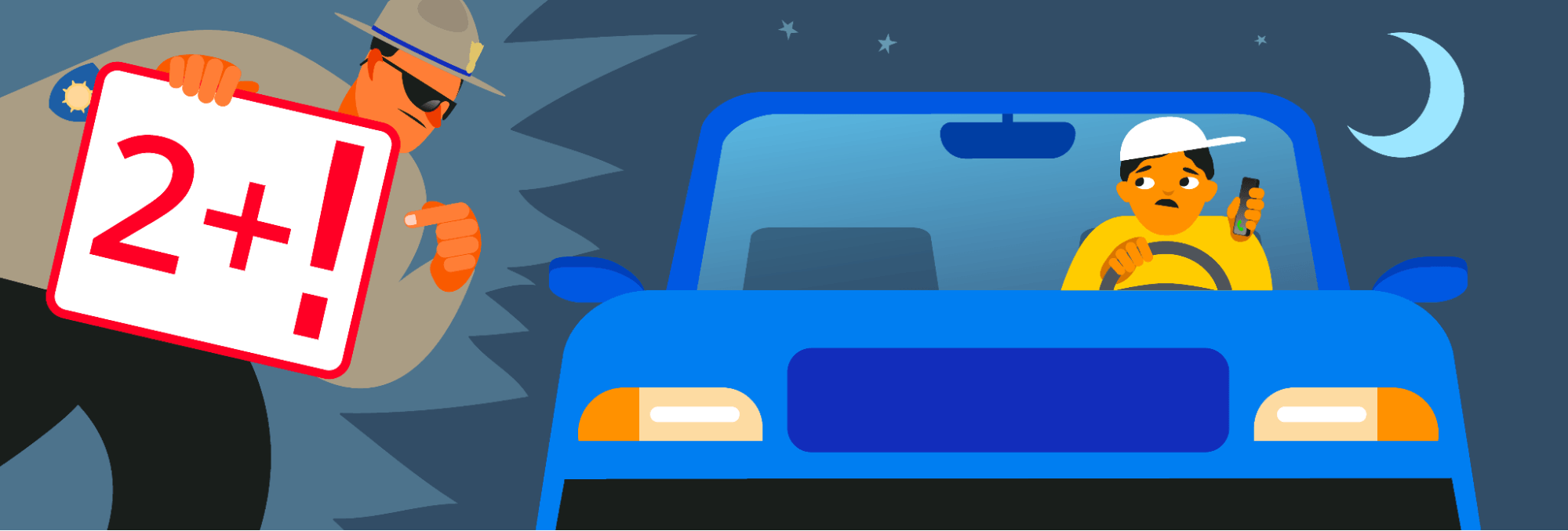In California, teenagers must wait until age 18 to obtain a driver’s license. This rule applies to everyone, including those who complete the mandatory six hours of practice and 30 hours of classroom instruction. But in the meantime, your child can apply for a probationary driver’s license, which has certain restrictions.
Also referred to as a provisional driver’s license, this document is issued to teens aged 16 to 18. To qualify, they must complete driver education (DE) and driver training (DT) and hold an instruction permit, among other requirements.
A probationary license gives you the chance to practice your skills on the road. Most importantly, it allows you to drive alone and enjoy your newly found freedom.
Here’s what you should know about it.
What Is a Probationary Driver’s License?
A probationary driver’s license is a document that grants minors the right to drive. Think of it as an intermediary step between a learner’s permit and a full driver’s license.
For the first 12 months after obtaining a provisional license, teenagers can only drive between 5 a.m. and 11 p.m. This rule is in place to reduce the risks of night driving.
Per the Insurance Institute for Highway Safety (IIHS), 19% of fatal crashes involving teenagers in 2021 occurred between 9 p.m. and midnight. Another 17% took place between 6 p.m. and 9 p.m.
Also, you cannot have any passengers under 20 during the first year of obtaining a probationary license. If you want to do it, you must be accompanied by a licensed driver.
According to the latest teen driver safety facts, carrying passengers without the supervision of a licensed driver increases the risk of a fatal crash.
For example, the Foundation for Traffic Safety found that teen drivers aged 16 or 17 have a 44% higher risk of death per mile driven when carrying one passenger under 21 than those driving without passengers. Carrying two young passengers can double the odds of a fatal crash.

However, there are exceptions to this rule, which we’ll discuss later on.
Apart from that, a provisional driver’s license gives you the same rights as a regular, unrestricted license. Therefore, you can drive to school or around the city, go on short trips, practice parking, and more.
Traffic school can help you keep a clean driving record, prevent insurance increases, and more!
When Is a Probationary Driver’s License Necessary?
This document isn’t necessary unless you want to drive alone before turning 18. But, as mentioned earlier, it allows you to gain experience behind the wheel and familiarize yourself with the traffic laws.
Let’s say you complete a driver’s education program at age 16. The next step is to apply for a learner’s permit, but you’ll only be allowed to drive under the supervision of:
- A certified driving instructor
- A parent or guardian
- An adult driver (25+) based in California
Simply put, a learner’s permit doesn’t let you drive alone. And you cannot apply for a regular driver’s license until age 18.
So, you have two options: wait for two years to get a permanent license or apply for a provisional driver’s license.

The right choice depends on your circumstances. A provisional license makes sense if you live far away from school or in an area with limited public transportation. Or if you simply want to practice more.
However, applying for a probationary driver’s license is quite straightforward—and there’s no reason not to do it.
Eligibility Requirements
Teenagers must meet the following requirements to qualify for a provisional license:
- Be at least 16 years old
- Complete both driver education (DE) and driver training (DT)
- Complete 50+ hours of behind-the-wheel training, including 10 hours of night driving
- Have held a learner’s permit (in any state) for at least six months
- Take and pass the driving test
Applicants aged 17 and a half or older don’t have to complete a driver’s education program to obtain a learner’s permit. However, they cannot apply for a probationary driver’s license without first completing DE and DT.
If you’re this age and, for some reason, you can’t complete a driver’s education course, simply apply for a learner’s permit. Once you turn 18, you can apply for a regular driver’s license.
How to Apply for a Provisional Driver’s License?
Applying for a provisional license isn’t particularly difficult once you’ve completed the educational requirements. Also, remember that you must first obtain an instruction permit.
Here’s what you need to do:
- Complete driver’s education (DE)
- Apply for an instruction permit:
- Bring your driver’s education certificate to the DMV
- Fill out Form DL 44 and have it signed by a parent or guardian
- Pay a $31 application fee
- Pass a vision test
- Pass the knowledge test with a score of at least 80%
- Have your photo taken
- Provide a thumbprint
- Complete at least six hours of practice (DT)
- Clock in 50 hours of driving time
- Make an appointment with the local DMV
- Take and pass a driving test
- Book an appointment online in advance
- Submit proof of insurance to the DMV
- Prepare your vehicle for the driving test
The application for an instruction permit (and the fee you pay) is valid for 12 months. If you can apply for a probationary license after six months, you won’t have to go through this process again.
However, if you get your permit and wait longer than 12 months to apply for your license, you’ll have to fill out a new application.

Also, it’s necessary to reapply for a probationary license (and pay the $33 fee again) if you fail the road test three times. The California DMV will charge a $7 fee for each subsequent driving test. You can retake the test every 14 days (excluding the test day) until you pass.
As far as the knowledge test goes, you can retake it after seven days (excluding the test day) if you don’t get a passing score.
Note that you’ll get a temporary driver’s license after passing the road test. This document is valid for 90 days. In the meantime, the DMV will process your application and send the provisional license by mail.
Documents Required for Obtaining a Probationary License
The documents required for obtaining a provisional license depend on your circumstances. If you’re a California resident, bring the following to the DMV:
- Form DL 44, which can be completed online and signed at a DMV office
- A driver’s education certificate or Form DL 33 (for applicants who completed driver’s education in another state)
- Proof of identity, such as an ID card or passport
- Your social security number
- A driver’s education certificate
- A learner’s permit signed by a parent/guardian or driving instructor (which must confirm you have completed 50 hours of practice)
- Proof of financial responsibility, such as a valid insurance policy (which is required for taking the driving test)
But what if you complete a driver’s education program in another state? Then you must bring an official letter from your driving school when applying for a learner’s permit. As mentioned earlier, this permit is a prerequisite for obtaining a probationary license.
If you moved to California from another state, you must also submit proof of residency. Apart from that, the application process is the same as for California residents.
Restrictions and Limitations
Teenagers are subject to certain restrictions for the first 12 months after obtaining a provisional license:
- They cannot drive between 11 p.m. and 5 a.m.
- They can transport passengers under 20 only under the supervision of a driving instructor, parent/guardian, or licensed driver (over the age of 25)
However, there are situations where these rules don’t apply.
For example, if you must go to work or school and have no other means of transportation, you can drive between 11 p.m. and 5 a.m. In such cases, it’s necessary to carry a note signed by your employer, school principal, or other authorized parties.
The same goes for teens with certain medical needs or those helping a family member. If, say, you must take your 10-year-old brother to a doctor, you may be allowed to carry him as a passenger (even when driving unsupervised).
These exceptions also apply to emancipated minors. Teenagers who fall into this category don’t have to carry a signed note.
Your city or county may enforce further restrictions. Also, beware that drivers under 18 may not use handheld or wireless communication devices while behind the wheel unless:
- They are driving on private property
- They must call 911
Texting and driving (and similar practices) can slow your reaction time, increasing the odds of a crash. According to some studies, this habit poses the same risks as drunk driving.
Penalties for Violating the Terms of a Probationary License
As discussed above, you may use a smartphone or other devices while driving if you have an emergency. However, the law isn’t clear about whether you can ignore the other restrictions in emergency situations.
So, if you’re caught driving at night while rushing to the hospital, you may or may not be penalized—depending on the police officer.
Violating the terms of your license will result in penalty points, license suspension, and, in some cases, probation time.
- 2+ points within 12 months: 30-day license suspension
- 3+ points within 12 months: six-month suspension and 12-month probation
- Additional points during the suspension/probationary period: increased suspension time

Duration and Renewal
In California, a provisional driver’s license is valid until you turn 18. California driver’s license renewal can be done online, by mail, or in person before it expires so you can transition to a full driver’s license.
The easiest option is to renew your license online. All you need to do is create an account with the DMV, pay a $45 fee, and submit some basic information, such as:
- Your date of birth
- Social security number
- Provisional license number
- Home address
Once you’ve completed the application, you should receive your driver’s license within 14 to 30 days. Sometimes, this process can take up to 60 days.
In the meantime, request a temporary license from the DMV so you can continue to drive.
Benefits and Consequences
A probationary license allows you to develop your skills and gain driving experience. Plus, it could save you money since you won’t have to pay for driving lessons every time you want to hit the road.
By taking this step, you’ll have the freedom to drive in or outside the city. That means you’ll no longer have to wait for the bus or take the train unless you must travel at night.
Another advantage is that you can apply for part-time jobs that require a driver’s license. For example, you could work as a delivery driver, sales rep, or pet groomer.
Most importantly, you’ll familiarize yourself with the car and become comfortable on the road. As a result, you’ll be better prepared to deal with common road hazards, heavy traffic, and challenging situations, like winter driving.

